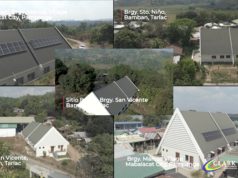Formerly called the Balete Pass, it is the beginning point of the gently and slightly zigzagging stretch of the grimly regarded “killer mountain highway of Nueva Ecija” that ends to portions of this city going up to the valley in the north.
The gory sobriquet is due to deadly vehicular road accidents, the latest of which was last April 18 when 34 passengers of an ill-fated bus were killed and scores of others were injured.
In World War II, the pass, then known as Balete Pass, was the scene of the pivotal “Battle of Luzon.” The highway, the main road to the pass, was where thousands of the Allied troops marched from Central Luzon to drive away the enemy on the 910-meter elevation pass.
Annual commemoration of this event has been proclaimed May 10-13.
“The battle, which started in late February 1945 up to May 31 that year, was for domination of the north which was of decisive importance for the tide of the war,” according to published American and Filipino accounts of the event.
Accordingly, the retreating Japanese force from Baguio City took a delaying stand on the Balete Pass and other nearby points from Pangasinan to Bayombong, Nueva Vizcaya for its final defensive position in Kiangan, Ifugao. The 25th division of the US Army, after the liberation of Manila and Central Luzon, made a push via the highway from here to the Balete Pass along with the Filipino troops belonging to the Philippine Commonwealth Army, Philippine Constabulary and the recognized units of the Filipino Luzon Guerilla Forces.
The battle claimed the lives of 7,750 Japanese soldiers, 685 American soldiers and 285 Filipino fighters and thousands of others wounded. The Allied forces eventually took control of the pass on May 31, 1945.
The defeat of the Japanese forces eventually led, after a few months, to the surrender in Kiangan of Gen. Tomoyuki Yamashita, then dubbed as “Tiger of Malaya,” who was commander of the 14th Japanese Area Army with more than 260,000 troops in the country.
One other sad note in the cleansing of Balete Pass was the killing of the assistant commander of the US Army Division, Brig. Gen. James Leo Dalton II, by a Japanese sniper. It was in his honor that the pass was renamed Dalton Pass.
In September 2011, the Philippine Congress passed a resolution declaring Balete Pass as a national shrine “to give honor to those who sacrifi ced their lives for the liberation of the country”. The resolution was principally authored by then Rep. Carlos Padilla of Nueva Vizcaya.
On the summit of the Dalton Pass are three markers: the “National Shrine of the Battle of Balete Pass”, the “Chinese Overseas Wartime Hsuehkan Militia Memorial”, and the “Japanese Memorial”.
The Chinese memorial was in honor of the fallen militia men who fought alongside with the Allied forces.
In 1995, by virtue of a proclamation signed by then Pres. Fidel Ramos, the “Battle of Balete Pass” was declared to be commemorated every year from May 10-13. It was one of the 43 significant events to the liberation of the Philippines during World War II listed in the proclamation.




